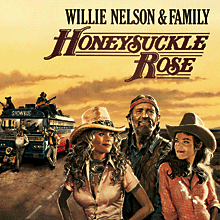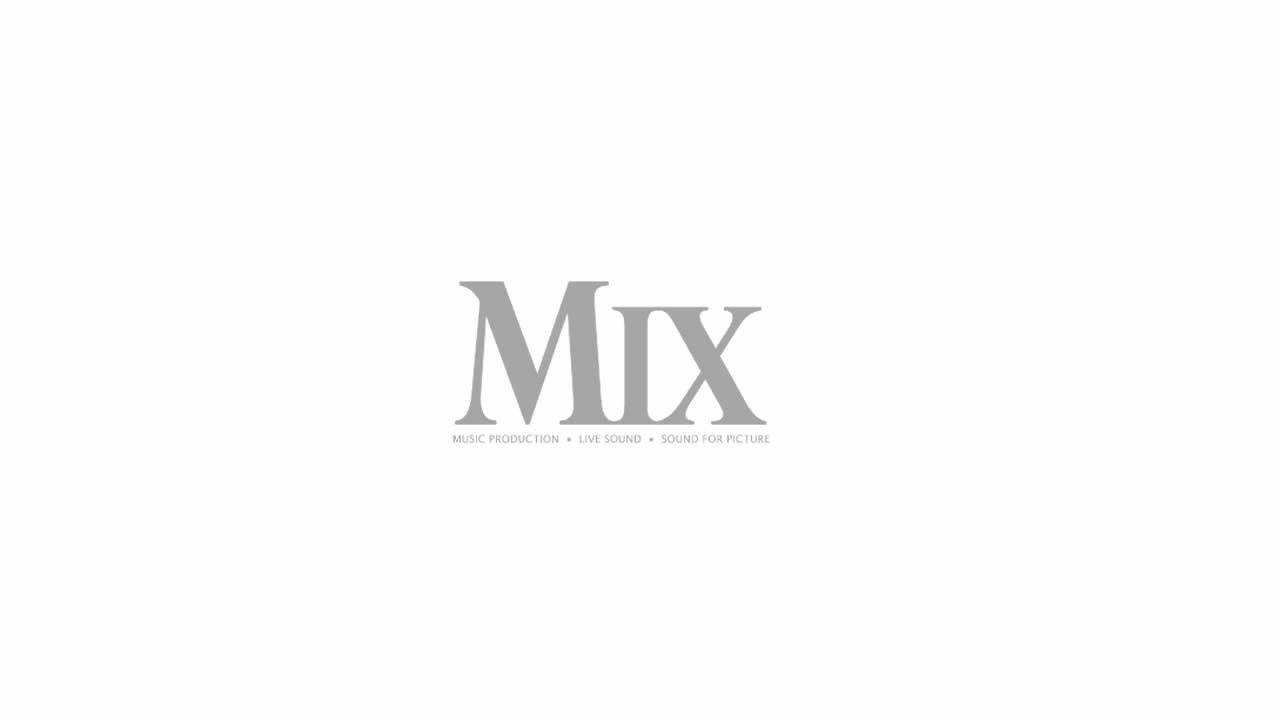On the Road Again by Willie Nelson When Was It Recorded
Classic Tracks: Willie Nelson's "On the Route Over again"
Similar nearly country vocalizer/songwriters worth their salt, Willie Nelson operates outside the Nashville mainstream not necessarily because he's a major rebel

Like nearly country singer/songwriters worth their salt, Willie Nelson operates outside the Nashville mainstream — not necessarily because he's a major rebel like his friend and fellow Outlaw Waylon Jennings was, but because he just didn't fit in. With vocal phrasing that owes about as much to Tony Bennett as to Hank Williams, Nelson didn't sound the manner producers expected country to sound. The consensus in Nashville seemed to exist that he had a peachy voice for songwriting.

Read more than "Classic Tracks"
Purchase the volume
Nelson moved to Nashville from his home country of Texas in the early on '60s, afterwards playing honky-tonks and DJ'ing for several years in the Fort Worth area. While still in Texas, he'd sold a song chosen "Family Bible" to a guitar teacher for $fifty. The vocal was later a hit recording by Claude Gray, and Nelson felt encouraged to endeavor his luck in Music City. He found a friend and admirer in Hank Cochran, who helped Nelson get a publishing deal with Hal Smith'south Pamper Music.
"I started working in a garage at the Pamper office," Nelson recalled in his 1988 autobiography, Willie. "There was a door, a window, a guitar and the walls. I started talking to the walls, like I had done when I was a child in Abbott [Texas], reading the pages of the Star-Telegram that kept the current of air out. Hank walked into the garage, and on a piece of cardboard I had written, 'How-do-you-do Walls.'"
The composition that began with Nelson writing only "Hello Walls" became a awe-inspiring striking for country star Ray Price, and success began to follow success for Nelson: Billy Walker recorded "Funny How Fourth dimension Slips Away," Cost recorded "Night Life" and Patsy Cline had an unforgettable hit with "Crazy."
Nashville still failed to embrace him as a performer, simply Nelson, itching to blow some of his sudden wealth and take a interruption from his home life (the moods of his marriage to first wife Martha Jewel Matthews apparently ranged from drunk to violent), won a spot in Price's touring band, the Cherokee Cowboys. "I heard Ray Price'due south bass player, Donny Young — now meliorate known as Johnny Paycheck — had quit," Nelson wrote. "I talked Ray into hiring me to play bass with the Cherokee Cowboys. Ray didn't ask if I knew how to play bass, which I didn't."
The next 10 years were a professional and personal roller coaster for Nelson. He partied away piles of cash, divorced and remarried, scored a couple of Elevation x duet singles with his second wife, Shirley Collie, and became a member of the Opry. He changed labels a few times, releasing records with decreasing success, changed wives again and ultimately found himself back in Texas — Austin, this time — and prepare to first the most fertile menstruum of his career.
Nelson's breakthrough anthology, Red Headed Stranger (Columbia, 1975), was a huge and surprising success — a concept anthology with spare arrangements, including Nelson's heartfelt cover of Roy Acuff's "Blue Eyes Crying in the Rain." Nelson before long followed this with one of the biggest-selling state albums of all time, the collaborative compilation Wanted: The Outlaws, which glorified the Nashville-outsider status of Nelson and his good friends Jennings, Jessi Colter and Tompall Glaser. The Outlaws became more than than an anthology; it was a crossover movement that won the hearts not only of country listeners, just also of higher kids, rock fans and hippies — outsiders all, and all under the radar of the Nashville establishment.
Nelson rode the success of The Outlaws to make his beautiful collection of standards, Stardust, which Nelson says moved his tough friend Jennings to tears and, like a handful of popular recording artists of the time, he was propelled to the large screen. He was tapped to make Honeysuckle Rose, a pic that'southward part fiction, office concert film. Many of the songs to be used in the moving picture were already well-known, such as "Blue Eyes Crying in the Rain" and "Whiskey River," but the filmmakers wanted Nelson to come up with a new vocal about touring to exist the signature track.

Engineer Bradley Hartman, 1980
"I was on a airplane with Sydney Pollack and Jerry Schatzberg before long subsequently I signed to do the movie Honeysuckle Rose," Nelson recalled in Willie. "Sydney was the executive producer and Jerry the director, and they were talking to me well-nigh the music. They wanted a vocal. 'What kind of vocal?' I said. Either Sydney or Jerry said, 'Well, some kind of song nearly people traveling all over the land making music.' I said, 'You mean being on the road over again?' They said, 'Aye, that's it!' I similar to show off occasionally. I picked up an envelope, or peradventure it was an airsick bag, and wrote:
"On the road again.
I simply can't expect to go on the road again.
The life I honey is making music with my friends.
I just can't wait to get on the route again.
"'How about this?' I said."
For much of the pic, live shows by Willie Nelson and his Family Band were recorded before audiences filled with lucky fans who had won the chance to be "extras" in radio giveaways. They were real concerts, with real audiences, filmed to be part of a road movie most a fictional artist.
The recording engineer for the film music and the soundtrack album was Bradley Hartman, who had been with Brian Ahern'southward Enactron Studios for a few years. He had recorded and mixed Stardust, likewise as other Nelson projects during the mid-1970s. "I wasn't in the marriage, and movies always accept to be full-union, and then they always had to have union people hired to exist at that place, only I was really working the controls," recalls Hartman, who too notes that the songs for Honeysuckle Rose were captured the mode he'd record a live concert album: "Showco was doing the live sound, and we interfaced and did a divide off their audio."
Hartman recorded to a Stephens 24-rails tape machine, using the Enactron truck'southward Neve console. "It was ane of the older, big Neve dissever consoles with the inputs on ane side and the monitor section on the other," he says. "It was all recorded 24-track with SMPTE sync to the movie."
Hartman says Nelson sang into a Shure SM58 microphone, and he remembers using some additional drum mics across what Showco had prepare. "I used some 451s for overheads," he says. "At that time, it was a crazy band that Willie had. In that location were 2 drummers — one playing stick and the other playing brushes on superlative of it — and two bass players. There were 2 guitar players and Willie and Mickey Raphael playing harmonica. It was basically Willie'south longtime band, plus a few extras."
The signature song, "On the Route Again," was recorded about a dozen times, in diverse venues and in front of different audiences, until Nelson, who was the producer of the tracks, and Hartman knew they had "the take."
"We took the truck to Austin and San Antonio, and all around the Texas hill country on different locations to do the movie," Hartman says. "There were a couple of clubs in Austin. Nosotros did the Hemisphere Arena in San Antonio. They institute an old Texas-way dance hall out in the country in Fisher, Texas, where we did several days of shooting. Only the one that ended upwardly existence on the anthology and the single was i that was recorded at a gild in Austin called Soap Creek Saloon. I don't believe it'due south there anymore, but we worked at that place for 2 days. We set and they brought in extras; it was similar a free show. We recorded 'On the Road Again' 2 or three times at that place, and one take was just magical."
4 months after the motion picture shooting was complete, Hartman took the tracks to New York City to help with post piece of work. "I was involved in mail service-product on the picture show because quite a few of the music performances are interspersed with dialog and activity," he says. Later, the projection moved to L.A., where post was completed at Todd-AO Sound and Hartman mixed the album and single in Wally Heider's Studio 4. "They'd just put in a new Neve 8108 console and a new Ampex machine in that location," Hartman recalls. "They were calling it the 'Studio of the Decade' at that signal." He monitored on the studio's UREI 813 mains and A/B'd with Yamaha NS-10 near-fields.
Going back and listening to the recordings they'd made on location confirmed Hartman'due south opinion of which take of "On the Route" was the keeper. "It was merely the energy that came off the stage," he says. "This accept of it just jumped out. I mixed it a couple of times and fabricated certain the audience response was where it should have been; in that location were 451s, audience mics in the club, and I blended those to get the energy of the audience, but the operation is totally live."
Before long afterwards the Honeysuckle Rose movie was released, Hartman left Nelson's camp and became an independent engineer. "I did a few more than things with Willie; I remixed a couple of singles for him, only that was pretty much the last matter I did. Pretty soon thereafter, he built his own studio [Pedernales] and moved all his stuff there."
Hartman went on to record albums for Rodney Crowell and Rosanne Cash. His career afterward included a very settled menstruation in the early 1980s, when he lived in L.A. with his wife and child, recording voices for a toy company called Abracadabra Two. "I recorded every word Teddy Ruxpin ever said," Hartman says with a laugh. In the belatedly 1980s, he moved to Nashville, where he now runs his own studio, Trace Audio, and records mainly acoustic vocalist/songwriters and bluegrass artists such as Tim O'Brien.
Nelson, of class, continued building a much-celebrated career on his own terms. He won a All-time Land Song Grammy in 1980 for "On the Road Again," which continues to exist not only 1 of his trademark tunes, only too his way of life. "When I walk off the phase after a hot show," Nelson wrote, "I'm so wired on a natural high that for the side by side two or three hours, my feet barely touch on the floor. Information technology used to be, when the regular show was over and everybody was roaring, we'd become to a bar or somebody's house and the band would keep playing until we could encounter the sunlight through the windows and hear the birds singing outside. At present we get into our caravan of buses and leave town as soon every bit the show is over. In that location'south plenty of future down when you're rolling all night on the highway."
Source: https://www.mixonline.com/recording/classic-tracks-willie-nelsons-road-again-365659
Postar um comentário for "On the Road Again by Willie Nelson When Was It Recorded"